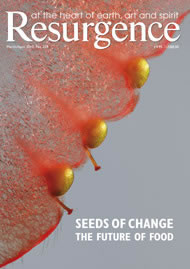Drawn to Antarctica consists of paintings and drawings, photographs and notes from sketchbooks, which resulted from a journey that the artist Frances Hatch made to Antarctica in February 2005. The journey lasted only a fortnight and the book at seventy-eight pages is correspondingly short. It conveys, nevertheless, a sense of spaciousness.
This is due in large part to the quality of the visual images, which the viewer lingers over. To one unfamiliar with the Antarctic, and inclined to think of it as a predominantly white world, there is a surprising and beautiful variety in the colours and shapes which snow and ice and sea afford the painter. There are, for example, the many blues, including indigo, cobalt and ultramarine, in Hatch’s watercolours, collages, and mixed media studies of icebergs and sea. Yellows and greens and browns are among other colours that in her work delight the eye. A startling red in ‘Aitcho Island Adelie Penguin Rookeries’ represents “a nesting area stained by krill which is spilled while feeding chicks”. A note accompanying another painting speaks of “buoyant ice blocks steaming along like boats”, and “colourful, compressed, crafted by wind, water current, sun, friction”. The artist’s craft, which produces colour and texture and rhythm and also gives her painted images a sculptural quality, corresponds to the ‘crafting’ of natural forces at work on the ice.
Wandering albatrosses and rocks “bristling with penguins” suggest a world apparently little touched by human beings. Yet what gives the book authenticity is Hatch’s frank acknowledgement of the terms of her own presence in the Antarctic. It is, in the words of the subtitle, ‘An Artist’s View’. As she says in the Introduction: “It was a ridiculously short visit compared to the time spent travelling there and an unjustifiable indulgence considering the environmental cost of aviation fuel”. Crossing “the infamous bit of water” surrounding Antarctica, she confronted her fear of nausea, “in order that a new space could open up on the other side”. In the event, the experience satisfied her “thirst for an internal spaciousness”.
This need is widely and increasingly felt as our human invasion daily shrinks the globe. An answer to it, moreover, is one that the artist or writer travelling in the remaining wild areas may bring home to us, opening the mind to a new sense both of our imaginative resources and of the magnitude of Nature in our own localities. One may see a symbolic significance in Frances Hatch’s ‘Big Sea Berg’, in which the Dorset-based artist has used acrylic with “cardboard from Bournemouth Pavilion car park”.
Drawn to Antarctica contains a fine poem by Elisabeth Bletsoe, written “for Frances”. The book itself with its diverse visual and verbal materials may also be described as poetic. The notes, such as “craze of turquoise as glacier meets sea”, often have an imagistic quality. The mixed media of some works, including “stuff from the puddle at my feet”, and stamps, travel brochures, and pages of a National Geographic magazine article, both comment critically on the human appropriation of the Antarctic and help to give the artist’s vision a gritty embodiment.
Barry Lopez records in Arctic Dreams a painter describing his work to him as “a conversation with the land”. In Drawn to Antarctica Hatch has constructed what she calls “the map of Antarctica of my mind”. She has made it out of conversing with the materials provided by Antarctica, participating in the weather, and immersing herself in the elemental conditions, in the tradition of British landscape painting from Turner to Joan Eardley and David Tress. The work accordingly expresses a relationship between inner and outer, between the mind of the artist and the ‘matter’ of Antarctica, in which the spirit of the Peninsula resides. As the ship moved across the Antarctic Convergence, Hatch was bewildered by the opening of a spatial dimension “where a chunk of floating ice might be as big as Belgium or a bus”. Responding as an artist to this dimension she opened a new space for herself. It is a space she offers to share with others in this book.







